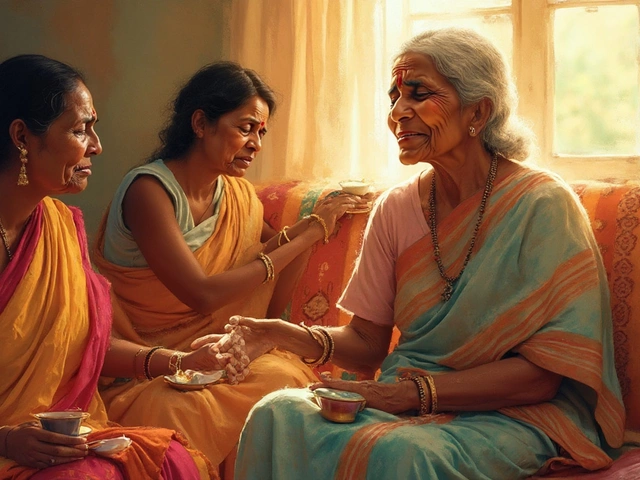Ever tried following a health routine to the letter, only to slip up once and feel like the effort’s lost? That little twinge of guilt, or maybe even the urge to binge because you “broke the rules” — yeah, been there. What if smashing perfection was the point? Ayurveda, the ancient Indian science of life, quietly nudges you toward balance, not impossible standards. And that’s where the 80/20 rule steps in, tossing out the idea that you have to “get it all right.” Instead, it encourages you to savor flexibility, care for yourself, and design habits that actually stick, even on days when you just want to eat that slice of cake. Forget guilt. Let’s unpack how the 80/20 mindset becomes your everyday Ayurvedic toolkit—one that’s as good for Monday morning as it is for Saturday pizza.
What Does the 80/20 Rule Really Mean in Ayurveda?
The 80/20 rule didn’t start in Ayurveda. It actually began as the Pareto Principle over a hundred years ago in economics, pointing out that 80% of results come from 20% of actions. In wellness, though, people use it as an antidote to strict health dogmas. Ayurveda grabs this concept and spins it into golden advice for eating, lifestyle, and holistic health. The takeaway: focus on healthy habits most of the time (80%), and allow some room (the other 20%) for other choices—without self-loathing or panic.
Ayurveda is all about balance — between mind, body, and environment. It teaches that your routines should fit your unique body type (dosha) and adjust to your life stage, climate, and season. The 80/20 rule, when blended with Ayurveda, isn’t an excuse to binge, but a gentle reminder that the occasional treat is not your enemy. In fact, studies from the Institute of Integrative Nutrition found that people who followed this ratio had better long-term success with dietary changes and stress management compared to those who aimed for perfection every day.
Let’s get specific. If you’re eating Ayurvedic meals like kitchari and fresh veggies and following ideal sleep routines for 80% of the week, you’re laying a solid foundation for health. But when you’re at a party or out for dinner with friends, enjoying a favorite dessert or a little late night fun is not going to undo your progress. Ayurveda even has a term for this—'upavasa dosha'—which warns against deprivation that leads to emotional or physical imbalance.
Here’s a quirky fact: ancient Ayurvedic texts, such as the Charaka Samhita, actually mention the importance of pleasure and social connection as pillars of health. Denial and shame aren’t part of the plan. The 80/20 approach makes sure you honor social and emotional needs alongside physical habits. Dietitians at All India Institute of Ayurveda noticed patients who adopted flexible routines reported fewer binge-eating episodes and more consistent self-care, proving this isn’t just a feel-good idea—it works.
To make it stick, anchor the 80% in routines grounded in Ayurveda: mindful eating (chewing each bite, eating in calm spaces), using ghee and digestive spices, seasonal veggies, tongue scraping, and oil massage (abhyanga). The 20% can be when you have birthday cake, enjoy fast food with friends, skip yoga, or have a late night snack with someone special — all without guilt.
Here’s a quick snapshot based on a week:
| Days (out of 7) | Following Ideal Ayurveda | “Flexible” or “Fun” Choices |
|---|---|---|
| 5-6 | Sattvic meals, dinacharya (routine), regular sleep | None/minimal |
| 1-2 | Flexible with social meals, occasional treats, altered sleep | Desserts, late nights, non-traditional foods |
If you’re wondering about specifics, here’s what a real day might look like: Breakfast—warm spiced porridge, lunch—dal with seasonal veggies, dinner—kitchari. But if your friend brings over pizza Friday night (looking at you, Neha), you can join in, enjoy it, and the world won’t end.

Putting the 80/20 Rule Into Action—Beyond Just Food
Most people hear “80/20 rule” and just think of food. But with Ayurveda, it drips into so much more: sleep, exercise, screen time, self-care rituals, and even emotional health. Ayurveda never treats you like a robot. Life happens—work stress, travel, skipping a sun salutation because your cat Bella leapt across your yoga mat. Should you spiral into guilt? Nope.
The best way to apply the 80/20 rule across your Ayurvedic lifestyle is to build consistency where it counts, and shrug off the rest. Let’s say you make medical-grade chai with tulsi, ginger, and cardamom five out of seven mornings—great! If you reach for coffee on a rushed morning because you slept late, let it go. Ayurveda encourages you to observe your own patterns, and only make changes that feel sustainable.
Here’s how the 80/20 rule works for routines:
- Sleep: Aim for good rest most nights. If you’re out late once or twice a week, enjoy your evening. The body’s resilient and will reset.
- Movement: If you’re practicing yoga, a brisk walk, or just doing stretches most days, don’t sweat it if you have a lazy day or skip your morning abhyanga.
- Mindfulness: Meditate or journal regularly, but don’t force yourself when things feel off. Missing a day won’t erase your progress.
- Relationships: Ayurveda prizes connection. Rather than obsess about “me time” every single day, make room for spontaneous get-togethers or family events.
Practical tip: Track your habits week-by-week, not day-by-day. Ayurveda is seasonal and cyclic, not about daily perfection. Some people use a habit tracker and give themselves a pat on the back if 80% of their boxes are checked. Over weeks, this causes less stress than holding yourself to 100% and then crashing.
Ayurveda also values 'ojas'—your vital energy and immunity. Ojas is built through consistency. So, if you stick with basic pillars (clean eating, good sleep, self-care) most of the time, you’ll keep your core energy high, and your body will handle the small indulgences with ease. The All India Institute of Ayurveda surveyed 212 patients using this rule; almost 88% said they felt less anxious about food and self-care, and over 70% saw improvements in digestion, skin, and mood.
One more thing: You can also use the 80/20 rule for letting go of “perfect” wellness shopping. You don’t need every Ayurvedic superfood or beauty ritual. Focus on the biggest wins: good oil, basic spices, and seasonal produce. The rest is bonus.
From my couch at home, while Bella is curled up next to me and Neha’s making mint tea, it becomes clear: perfection isn’t the goal. Making space for real life, mismatched routines, and all the mess in between is where Ayurveda quietly shines.

Tips and Tools: Making the 80/20 Rule Work for You
Ready to stop chasing flawless routines and make space for balance instead? Here’s how you can weave the 80/20 wisdom into daily Ayurvedic living, with practical, bite-sized steps:
- Prioritize your biggest routine anchors. If you love your morning warm water with lemon, or find oil pulling sets the mood for the day, make those non-negotiable. Everything else? Let it flex.
- Batch-cook simple meals. Keep kitchari mix in the pantry, roast a tray of veggies, or prep homemade ghee for quick, sattvic lunches and dinners. If you grab a dosa or smoothie bowl when you’re out, it’s just part of the plan.
- Honor cravings mindfully. Ayurveda views cravings as your body’s way of speaking up. Sweets calling your name? Try spiced dates or sesame balls, and enjoy without shame. If you go for chocolate, eat it slow and really savor it.
- Communicate with family and friends. Let them know about your Ayurvedic habits, but don’t evangelize. This is your journey. Joining a pizza night or sharing chai can be its own dose of Ayurveda—nourishing your social health.
- Get outside daily. Fresh air, sunlight, and a quick walk are restorative for any dosha type. Miss a day? No big deal. Just get back to it the next day.
- Skip the all-or-nothing thinking. Messed up your routine? Your health won’t spiral. Consistency matters more than perfection. That’s why the 80/20 rule works across cultures and centuries.
- Start small. Add one or two Ayurvedic habits for your 80% foundation. When they become automatic, add the next. Stack wins—don’t pile on stress.
- Be gentle with self-talk. Ayurveda says thoughts and emotions impact digestion and immunity. Swap criticism for encouragement. You’re not a “bad” yogi or eater on an off day.
- Listen to your body’s cues. Tired? Sleep earlier. Too full? Have a light dinner the next day. Ayurveda adapts and thrives on self-awareness, not a checklist.
Want a tangible tool? Create a weekly table (like the one above) and highlight your 80% Ayurvedic routines. Leave the other 20% blank or fill in with small joys. This visual cue can help you notice progress beyond the scale or numbers. For even more accountability, consider sharing your tracker with a friend or partner (Neha and I love comparing what worked each week, laughing at the chaos, and celebrating tiny wins).
Beneath all the ancient Sanskrit verses and holistic remedies, Ayurveda just wants you to live more awake. That will never mean saying no to every cake, latte, or movie night. A flexible, forgiving approach is baked into the tradition—it’s just finally catching up with modern wisdom. If you’re aiming to make Ayurveda a lifelong ally, the 80/20 rule is your cheat code for resilience, not restriction. Embrace the imperfection, listen to your body, and let the 80/20 rhythm make space for joy—in your food, your routines, and your life.





